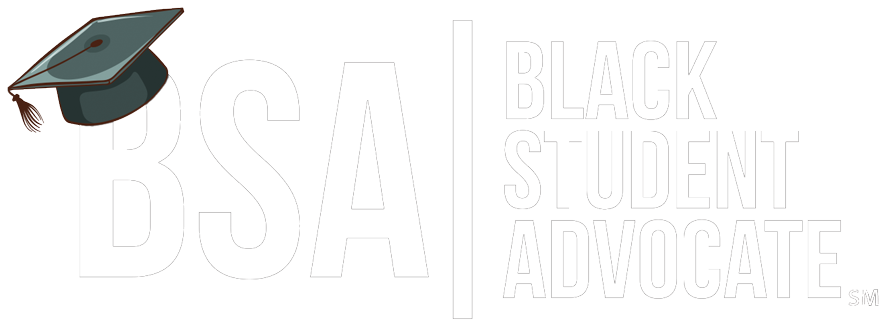In today’s hyperconnected world, where children and teens live much of their social lives online, cyberbullying has become one of the most alarming issues of the digital age. Once confined to school hallways or playgrounds, bullying now extends beyond the physical world — reaching into bedrooms and personal devices through screens.
According to the Pew Research Center, more than 59% of U.S. teens have experienced some form of cyberbullying, including name-calling, spreading false rumors, or receiving explicit or threatening messages. For Black students, particularly, the trauma of online harassment is compounded by racial slurs, discrimination, and systemic bias that amplify the emotional toll.
The cyber bullying effects go far beyond hurt feelings. Victims often struggle with depression, anxiety, poor academic performance, and in some cases, suicidal thoughts. Parents and educators must recognize that digital cruelty can be just as damaging — if not more — than physical bullying.
At The Black Student Advocate Network, we believe it’s critical to educate families, schools, and communities about how cyberbullying manifests, how it affects students — especially those in marginalized groups — and what can be done to stop it.
1. Understanding Cyberbullying: The Invisible Threat
Cyberbullying refers to harassment, humiliation, or intimidation that occurs through digital platforms — such as social media, text messages, gaming networks, or email. It can take many forms:
- Spreading rumors or lies online
- Sharing embarrassing photos or videos without consent
- Impersonating someone to damage their reputation
- Sending threats or hate messages
- Excluding someone from group chats or social media circles
Unlike traditional bullying, which might occur face-to-face, cyberbullying is relentless and inescapable. It follows the victim home, appearing on screens day and night.
The Anonymity Factor
Online anonymity often emboldens bullies to say things they would never express in person. They can hide behind fake accounts or usernames, making it difficult for victims — and even law enforcement — to identify them.
Public Humiliation
A hurtful post or meme can go viral in seconds, exposing victims to widespread ridicule. This public shaming can lead to long-lasting digital footprints that are impossible to erase, prolonging the trauma.
Cyberbullying and Black Students
For Black youth, cyberbullying often includes racialized harassment, such as racist memes, hate speech, or digital exclusion based on stereotypes. These experiences reinforce systemic inequities, making it vital for educators and advocates — including those at The Black Student Advocate Network — to create culturally sensitive responses.
2. The Emotional Toll: How Cyberbullying Affects Mental Health
The emotional consequences of cyberbullying can be devastating. Unlike traditional bullying that may end after school hours, cyberbullying infiltrates every part of a child’s life, leading to constant stress and psychological harm.
Anxiety and Depression
Victims often experience heightened levels of anxiety, fear, and sadness. They may dread checking their phones, social media, or attending school. Persistent harassment erodes self-esteem, leading many children to believe the negative things said about them.
Isolation and Loneliness
Cyberbullying often isolates victims from their peer groups. They may withdraw from social interactions to avoid ridicule or feel that no one understands their pain. This loneliness can contribute to long-term emotional scars.
Suicidal Ideation
The tragic link between cyberbullying and youth suicide cannot be ignored. According to research, teens who are cyberbullied are twice as likely to attempt suicide compared to their peers. The emotional burden becomes unbearable when victims feel trapped in a cycle of digital abuse.
Impact on Black Youth
For Black students, cyberbullying often intertwines with racial trauma — exposure to racial slurs, hate imagery, or discriminatory messages can trigger deep emotional wounds. The Black Student Advocate Network works to raise awareness that racialized cyberbullying is not only a matter of school discipline but one of mental health and civil rights.
3. Academic Consequences: When Learning Becomes Secondary to Survival
The effects of cyberbullying extend into the classroom, disrupting a student’s ability to focus, learn, and perform. Education becomes a secondary concern when emotional distress dominates a child’s daily experience.
Decline in Academic Performance
Victims often see a noticeable drop in grades. Anxiety and loss of concentration make it hard to study, complete homework, or participate in class discussions. Teachers may mistake this decline for laziness or disinterest rather than a sign of distress.
Absenteeism and School Avoidance
Many bullied students develop a deep fear of attending school, even when the bullying happens online. The connection between school peers and digital harassment blurs the line between safety and threat. Chronic absenteeism often follows, worsening academic gaps.
Disciplinary Issues
Some victims may react with anger, frustration, or defiance — behaviors that can lead to suspension or disciplinary action. Schools need trauma-informed approaches to recognize that these reactions often stem from unaddressed cyber bullying effects, not inherent behavioral problems.
The Role of Advocacy
At The Black Student Advocate Network, we encourage schools to integrate mental health support, cultural competency training, and restorative justice models that help students heal from cyberbullying rather than punish them further.
4. The Digital Amplifier: How Technology Escalates Harm
Technology has revolutionized communication — but it has also magnified the reach and impact of bullying. The internet acts as an amplifier, spreading cruelty at lightning speed.
Permanence and Virality
Once something is posted online, it’s almost impossible to erase. Screenshots and shares make harmful content live indefinitely. This permanence intensifies the victim’s anxiety, knowing their humiliation may resurface at any time.
24/7 Exposure
Cyberbullying can occur at any hour. There is no refuge from online cruelty when your phone is always within reach. The constant exposure leads to chronic stress and emotional fatigue.
Algorithmic Bias
Social media algorithms often amplify engagement, meaning hateful or sensational posts may be prioritized. When cyberbullying includes racial or cultural bias, these algorithms inadvertently spread discrimination faster, targeting already marginalized communities.
The Role of Schools and Tech Companies
Educators and parents must collaborate with technology companies to implement stronger reporting systems, digital literacy education, and anti-bullying tools. Platforms must take responsibility for moderating hate content swiftly and effectively.
5. The Unique Impact on Black Youth and Students of Color
Cyberbullying doesn’t affect every child equally. Black students and students of color often face a distinct form of online harassment that blends bullying with racism, colorism, and cultural bias.
Racialized Bullying
Racial cyberbullying includes the use of slurs, mocking cultural hairstyles, or spreading stereotypes about Black culture. Such harassment not only damages self-image but reinforces feelings of inferiority and exclusion.
Double Burden: Racism and Isolation
Black students often experience a “double trauma” — the pain of being bullied and the lack of institutional support to address it. Many schools downplay or ignore racially charged bullying incidents, leaving students feeling unseen.
Cultural Barriers to Reporting
Some families and students hesitate to report bullying, fearing that complaints won’t be taken seriously or that they’ll face backlash. This silence perpetuates cycles of harm.
Advocating for Change
The Black Student Advocate Network is committed to challenging these inequities by promoting cultural sensitivity training in schools, implementing anti-racism education, and ensuring safe reporting systems that center Black students’ voices and experiences.
6. How Parents and Educators Can Prevent and Respond to Cyberbullying
The fight against cyberbullying begins with awareness and proactive engagement. Parents, educators, and community leaders all have critical roles to play.
Open Communication
Encourage children to talk about their online experiences without fear of punishment. Many kids stay silent because they fear losing device privileges. Create a safe space where they can speak honestly about what’s happening online.
Digital Literacy Education
Teach students about responsible social media use, privacy settings, and how to recognize digital harassment. Prevention starts with knowledge — children should understand how their actions and words online can deeply affect others.
Monitor Without Invading
Parents can monitor online behavior respectfully. Use parental control apps when appropriate, but also educate teens about self-regulation and empathy. Building trust is more effective than strict surveillance.
Collaborate with Schools
Educators must enforce clear anti-bullying policies that include cyberbullying and racial harassment. Teachers should receive ongoing training on how to identify and respond to digital bullying cases sensitively.
Mental Health Support
Schools should provide counseling resources for victims and bullies alike. Mental health professionals can help students process trauma, rebuild confidence, and learn healthy coping mechanisms.
Community Advocacy
At The Black Student Advocate Network, we urge parents and educators to work together in advocacy efforts — from policy reform to school programs that protect and empower students of color. Community-driven solutions ensure that every child feels seen, safe, and supported.
Conclusion
Cyberbullying is not just a “kids being kids” issue — it’s a mental health crisis, a social justice issue, and a call to action for everyone who cares about young people’s well-being. The cyber bullying effects ripple through families, schools, and communities, leaving lasting emotional and academic scars.
In the digital age, parents and educators must take an active stand against online cruelty. For Black students, especially, cyberbullying often intersects with racial trauma — making advocacy, awareness, and culturally competent support essential.
At The Black Student Advocate Network, our mission is to ensure that no student faces digital abuse alone. By fostering open dialogue, supporting mental health, and pushing for systemic change, we can transform online spaces into environments of respect and empowerment — where every child, regardless of race or background, can thrive safely.







Share This Page